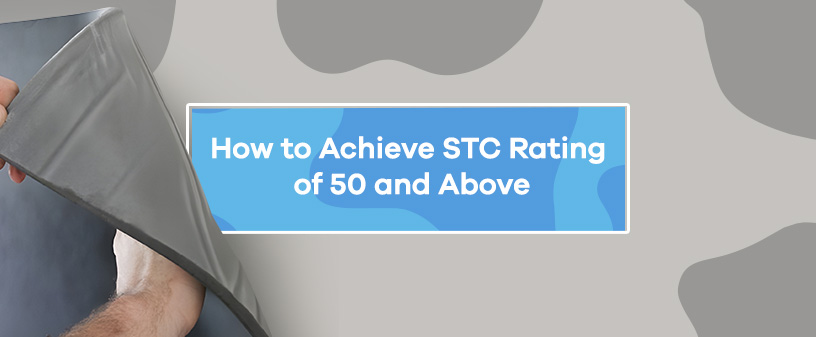
Soundproofing projects work toward one primary goal — preventing sound from leaving one room and entering another. Construction contractors and acoustic product manufacturers target precise specifications for high-level soundproofing. But how can you tell which products offer the best performance? The answer is in their sound transmission class (STC) rating.
What Is a Sound Transmission Class (STC) Rating?
Any acoustic product that prevents transmission will feature an STC rating, a numerical score that categorizes its soundproofing performance.
A product earns its STC rating by undergoing ASTM E413 Classification Standard testing procedures. To determine the STC rating, the testers place the material between a speaker and a receiver. The speaker emits sound at a specific decibel (dB) level, and the receiver records the sound from the other side of the soundproofing product.
Testers record the difference between the dB level the speaker emitted and the dB level that the receiver recorded to determine a transmission loss (TL) value. The process repeats for 16 distinct frequencies in total. The testers enter each TL dB level and frequency into a chart, forming an STC curve. They then compare the product’s curve against standard STC reference curves. The product receives the rating for the reference curve it most closely matches.
A product with an STC rating of 20 offers inconsequential transmission resistance — a listener would be able to hear and understand soft speech coming from the other side of the wall. At 60 or higher, the product has impressive soundproofing capabilities.
What Does an STC Rating of 50 Mean?
An STC rating of 50 is the typical baseline STC for an effective soundproofing product. International Building Code (IBC) 1206.2 and 1206.3 use 50 as the minimum STC rating for airborne and structural sound in multifamily homes. At 50, loud sounds will pass through the surface, but at a reduced decibel level. The surface will block softer noises, such as normal and loud speech.
Key Elements in an STC 50 Wall Assembly
A high STC rating goes hand in hand with a material’s mass and flexibility. Increase these qualities to achieve an STC rating of 50 or higher.
Mass
Any surface will disrupt a sound wave’s frequency upon impact. It reflects some noise, while the rest interacts with the wall as vibrational energy. The wall absorbs some of that energy, allowing the remaining energy to reach the other side. Increasing a surface’s mass boosts its STC rating by helping it absorb more of the noise for more TL. Doubling a surface’s mass or density can improve its TL by 6 dB.
Flexibility
A flexible surface can cushion sound upon impact, reducing reflections and increasing energy absorption. Decoupling a wall is a way to increase flexibility and reduce noise transmission by leaving a gap between two opposing drywall sheets. Each sheet receives its own studs that do not touch the opposing sheet. Noise must vibrate through both sheets independently before it can pass through. For better results, you can install soundproofing insulation in the gap or place a mass-loaded vinyl (MLV) soundproofing sheet along the drywall surfaces.
Shop for Soundproofing Products for an STC Rating Over 50
At Soundproof Cow, we offer numerous acoustic solutions that earn an STC rating of 50 or higher. We also have multiple products with lower ratings that can integrate with your walls, ceilings or floors to surpass the threshold:
- PROFLEX™ 90 underlayment: STC 72
- Quiet Barrier® HD Soundproofing Composite: STC 32
- Quiet Barrier® LD Soundproofing Composite: STC 20
- isoTRAX® Soundproofing System: STC up to 61
- Quiet Barrier® Lag Composite soundproof blanket: STC 29
Learn More About Soundproofing Your Walls
Ready to start a soundproofing project that gives you more peace and quiet at home? Soundproof Cow can help you get things moo-ving! Please contact us online to learn more about the products with the STC rating you need for your home.












